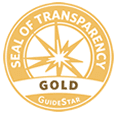The month of June ushers in National PTSD Awareness Month, which raises awareness for PTSD survivors. PTSD, or Post Traumatic Stress Disorder, occurs in people after they experience a traumatic event. Recovery from PTSD is possible, but for some, the road is long and tough; the lack of knowledge about PTSD and the stigma in seeking mental health causes some people to ignore the problem and suffer through it. June serves as a month of awareness for survivors, and encourages people to share articles, helplines, and more resources to those with PTSD to show that they can seek help.
The US Senate declared June 27th as National PTSD Awareness Day in 2010, but four years later, it changed to designate the entire month of June to be observed in order to bring more awareness and resources for help. One of the forerunners in the fight against PTSD, the US Department of Veterans Affairs, released a specialized calendar for people to download; this PTSD Awareness Month calendar features different activities that aim to increase support for survivors and raise awareness, like social media posts and articles to share, local therapists to find, and more. You can download the US Department of Veterans Affairs calendar here.
PTSD has had many names: “Shell Shock” and “Battle Fatigue” were the two names given to it during World War I and World War II, respectively, until it was named PTSD during the Vietnam War. Earlier treatments for PTSD prescribed painful options that ultimately didn’t work; thankfully, today, we have more humane treatments like group therapy, counseling, and medications that are more effective. Operation Red Wings Foundation offers therapeutic tools and resources to all Veterans in need, so check out our website for more information.
The National Center for PTSD states that approximately 8% of the American population will experience PTSD in their lifetimes, and women are twice more likely to suffer from it than men due to sexual trauma. There are two types of trauma that PTSD survivors can suffer from, referred to as “Big T” Trauma and “little t” trauma. “Big T” Trauma occurs after a life-threatening situation, while “little t” trauma is caused by a disturbing but not life-threatening event. Regardless of the type of trauma PTSD survivors suffer from, shivers and trembling are normal to experience after a stressful event, as the body releases excess adrenaline. People can also develop PTSD after hearing or witnessing someone else go through a traumatic event. It comes in all sizes and symptoms, and no two people experience it the same way.
So how can you help spread awareness this month? There’s a few different ways to help support National PTSD Awareness Month, but here are some of the best.
- Stand with survivors
Research shows that people recover faster from illness if they’re surrounded by loved ones ready to help them. Simply being present for survivors and offering a shoulder to lean on can mean the world to them; they need care and love, just like the rest of us.
- Learn about PTSD and look past the stigmas
Do some research about PTSD online and learn about its causes, symptoms, and treatments. By being better equipped in knowledge you can educate yourself and other people about it in the future. Educating others and spreading awareness is the top goal for National PTSD Awareness Month, so spreading the word and showing people that it’s okay to not be okay will show survivors that seeking treatment is not a bad thing to do.
- Talk about PTSD
National PTSD Awareness Month is designed to spread awareness! Talk about PTSD with your loved ones, donate to organizations if you can afford to, but the main takeaway is to never stop spreading information. The more people know the truth about it, the less harmful rumors spread that can stop survivors from seeking treatment. Spreading awareness of PTSD can also spread awareness of other mental illnesses that PTSD sufferers may have symptoms of; decreasing stigmas and increasing awareness of mental health problems will help all of us in the long run.
- Wear teal
The ribbon designated for National PTSD Awareness Month is teal, so wearing teal throughout the month of June can be a subtle way to do your part. Wearing teal can show survivors in the know that you stand with them, which can be reassuring to those who choose not to speak up about their PTSD and show them they’re not alone.
The month of June means a lot to both PTSD survivors and the loved ones of those survivors. The more that people talk about it, the more people will seek treatment, looking past the stigmas linked to seeking help for mental illnesses. This creates a domino effect for others to get help as well. Recovering from PTSD is different for everyone, but it is not impossible; this month raises awareness about the multiple treatment options possible for survivors, as well as the different triggers that can hurt PTSD sufferers and how to avoid them.
This month serves as a reminder of how strong humans can be. The human mind is incredibly strong and complex, working to keep us alive and persevering, but it has its limits, too. We can work together to eliminate the bad reputation that seeking mental help has, as there’s no shame in getting assistance in things we need help in doing.
If you or a Veteran you know are thinking of seeking help for your PTSD, we at Lone Survivor Foundation have multiple resources available to help you. Along with our different in-person programs and check-ins, we have mental health self-assessments on our website to help you figure out if our programs are a good fit for you and your needs. With no information from you needed and multiple assessments to choose from, simply find the one that you think best fits your condition and answer the questions attached.






